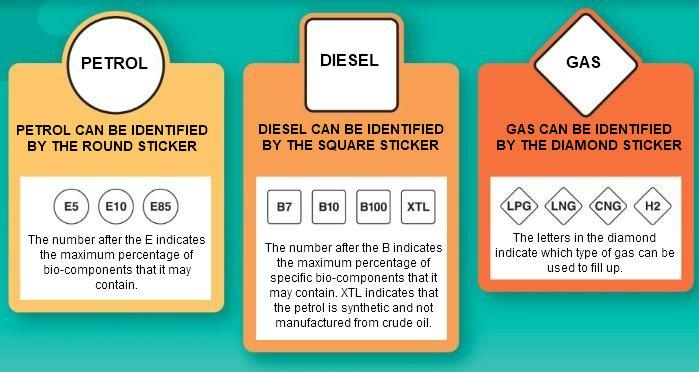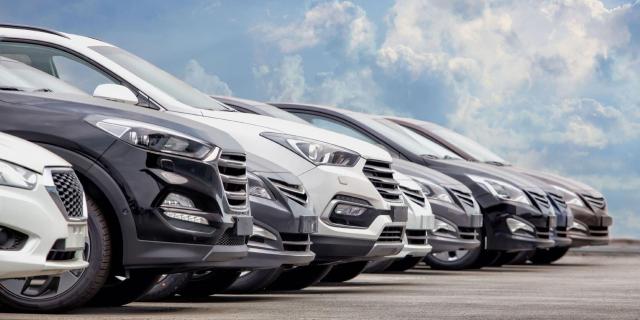NEW EU FUEL LABELS
INTERNATIONAL CLARITY ON FUEL
Motorists can be anxious when filling up abroad. If you are unaware that diesel is called gasoil or gazole in France for example, it can be extremely confusing. Clarity was provided as of 12 October 2018.
On that date, all petrol stations in the EU, plus a number of additional countries such as Norway, Turkey, Serbia and Switzerland, received standardised stickers that denote the various fuel types.

Bron: TankPro
NEW STICKERS ON PUMPS AND FUEL FILLER CAPS
The round symbols invariably denote petrol, the square symbols denote diesel and the diamond symbols denote gas. As of 12 October 2018, these stickers can be found on pumps and fuel nozzles, in addition to the original name of the fuel type. New cars also receive a sticker on the inside of the fuel filler cap in accordance with the same system. This way, it is immediately clear which fuel type you require when filling up at the pumps.
ROUND, SQUARE AND DIAMONED-SHAPED SYMBOLS
The stickers are a necessary response to the increasing number of new fuel types. This is as a consequence of a drive by the European Union and various national governments to encourage us to fill up using environmentally friendly products. For instance, there are an increasing number of (hybrid or non-hybrid) biofuels that reduce the amount of harmful emissions. The use of round, square and diamond shaped symbols is therefore intended to provide clarity.
Petrol is denoted by a round shape, in which the ‘E’ stands for ethanol. This is followed by a number which denotes the percentage of bio-components. E5, E10 and E85 indicate that the vehicles are suitable for petrol containing a maximum of 5 percent, 10 percent or 85 percent ethanol respectively. The same applies to diesel, which can be identified by its square shape. In addition to B7, B10, B100 and XTL are also available. XTL is a synthetic oil and thus not manufactured from petroleum. In the case of gas, the letters in the diamond specify which type it concerns. A CEN standard, also known as the European standard, is currently being defined for the development of similar labels for electric vehicles and charging stations.
MORE FUEL TYPES
More fuel types will also be introduced in Belgium. The number of hydrogen gas pumps (‘H2’ sticker) will increase. Euro95 and Super will continue to be available, however, from 2019 onwards, Euro95 will contain significantly more ethanol (up to 10 percent (E10) instead of the current 5 percent (E5)).
The new stickers do not replace the old names, but instead denote the maximum percentage of biofuels that have been added to the fuel. Due to the increasing number of fuel types, the European Commission (in consultation with the sector organisations concerned) decided to make uniform stickers mandatory. As a result, road users throughout the EU now have clarity about whether a certain fuel is suitable for their vehicle. This is important, as not all engines are suited to fuels with a higher biofuel percentage. This is therefore independent of terms such as E95 or E98 (which specify the octane content in petrol). These names will continue to exist.




